 I’ve written a few prior posts on Nutanix Clusters on AWS: Nutanix Clusters on AWS – Hybrid Cloud and Multicloud Platform, Nutanix Clusters on AWS – Getting Started and on Nutanix Beam: Optimize Cost Across Public and Private Clouds with Nutanix Beam, Nutanix Beam – Chargeback and Tracking Spend Across Clouds. In this post, I marry the two and use Nutanix Beam to demonstrate how the Hibernate/Resume functionality in Nutanix Clusters can be used by customers to lower their cloud spend when using Nutanix Clusters in AWS. Note, Hibernate/Resume functionality is still in Early Access as per shown in screen shots further below.
I’ve written a few prior posts on Nutanix Clusters on AWS: Nutanix Clusters on AWS – Hybrid Cloud and Multicloud Platform, Nutanix Clusters on AWS – Getting Started and on Nutanix Beam: Optimize Cost Across Public and Private Clouds with Nutanix Beam, Nutanix Beam – Chargeback and Tracking Spend Across Clouds. In this post, I marry the two and use Nutanix Beam to demonstrate how the Hibernate/Resume functionality in Nutanix Clusters can be used by customers to lower their cloud spend when using Nutanix Clusters in AWS. Note, Hibernate/Resume functionality is still in Early Access as per shown in screen shots further below.
Below, it can be seen the Humair-s-Cluster-2 is currently running while the Humair-s-Cluster is already hibernated. Note, this is a test environment so I only have one host running in each cluster. Production environments will always have a minimum of three hosts in a cluster.
When a cluster is hibernated, the host data is stored in AWS S3 storage and the EC2 baremetal host is returned to the AWS pool; thus, the customer is no longer charged for the compute node. Note, there is still some cost associated with the S3 storage and associated resources but it is minimal compared to the cost of running EC2 baremetal hosts.
To hibernate a cluster, simply click the three dots next to the status to expand the menu options and select Hibernate as shown below. Note, this hibernate and resume feature can also easily be automated; I will cover this in a future post.
Below, you can see, it is required to type in the name of the cluster before hibernating the cluster.
Once, you confirm to hibernate the cluster, the status changes to Hibernating.
Below you can see the Humair-s-Cluster-2 cluster has been hibernated.
Below you can see the cluster node shows as Stopped under Instance state in the AWS console when the cluster is hibernated.
From the same Nutanix Clusters on AWS portal menu, I can now resume the cluster when desired as shown below.
As mentioned prior, when a cluster is hibernated, the host data is stored in AWS S3 storage and the EC2 baremetal host is returned to the AWS pool; thus, the customer is no longer charged for the compute node. Below, I leverage Nutanix Beam to show the benefits of hibernating a cluster.
On Sept 23rd, I started tracking the Nutanix Clusters spend via cluster UUID. Beam can do this by leveraging AWS cost allocation tags. I discussed AWS cost allocation tags in a prior blog on Nutanix Beam, Nutanix Beam – Chargeback and Tracking Spend Across Clouds. I will discuss using Nutanix Beam to analyze Nutanix Clusters on AWS spend in more detail in a future post. Before the Sept 23rd, you can see all the spend is showing as unallocated. On Sept 23rd and after, you can clearly see the spend associated with the Nutanix Cluster in AWS with UUID ending in 0818.
On Sept 23rd, I also hibernated the cluster ending in UUID 0818. I then resumed the cluster late Sept 30th. From below Nutanix Beam screen shot, you can see the associated costs from AWS are minimal while the cluster is hibernated. As mentioned prior, there are still some costs related to the S3 storage where host data is backed-up to and associated resources. I hibernate the host again on Oct 2nd, and you can see the associated costs drastically drop.
You can see the UUID of the cluster on the associated resources used by the cluster in AWS; the associated resources will have a nutanix:clusters:cluster-uuid tag as shown below. Note, here I have already resumed the cluster.
The cluster UUID can also be obtained from the Nutanix Clusters on AWS portal by clicking the three dots next to the cluster status to expand the menu and selecting Audit Trail as shown below.
The Audit Trail provides a record of the operations performed on the cluster. Clicking the three dots again on the respective record will show the cluster UUID the operation was performed on.
In this post on Nutanix Clusters on AWS, I covered some of the specifics around hibernating clusters, how associated cost savings can be captured and reported in Nutanix Beam, and associated benefits of the Hibernation feature. In future posts, I’ll go into more detail on additional capabilities in Nutanix Clusters on AWS as well as more specifics on how Nutanix Beam can be used for cost analytics with Nutanix Clusters on AWS.
Follow me on Twitter: @Humair_Ahmed


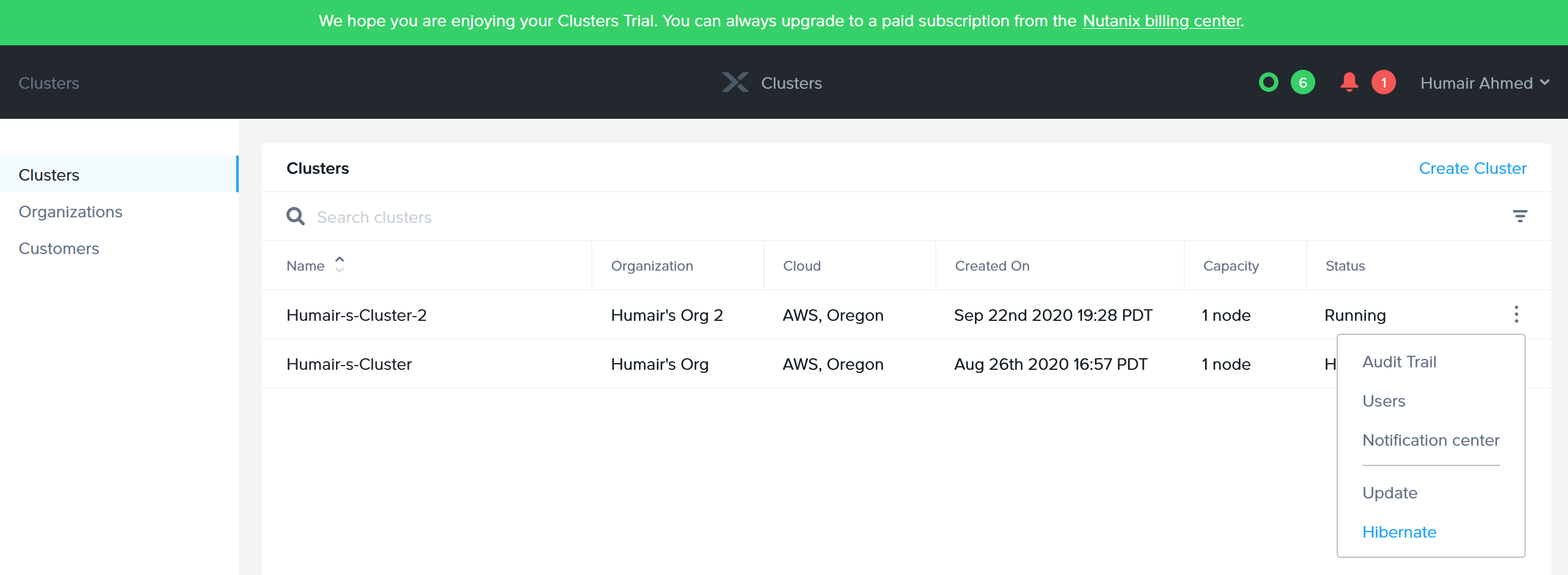
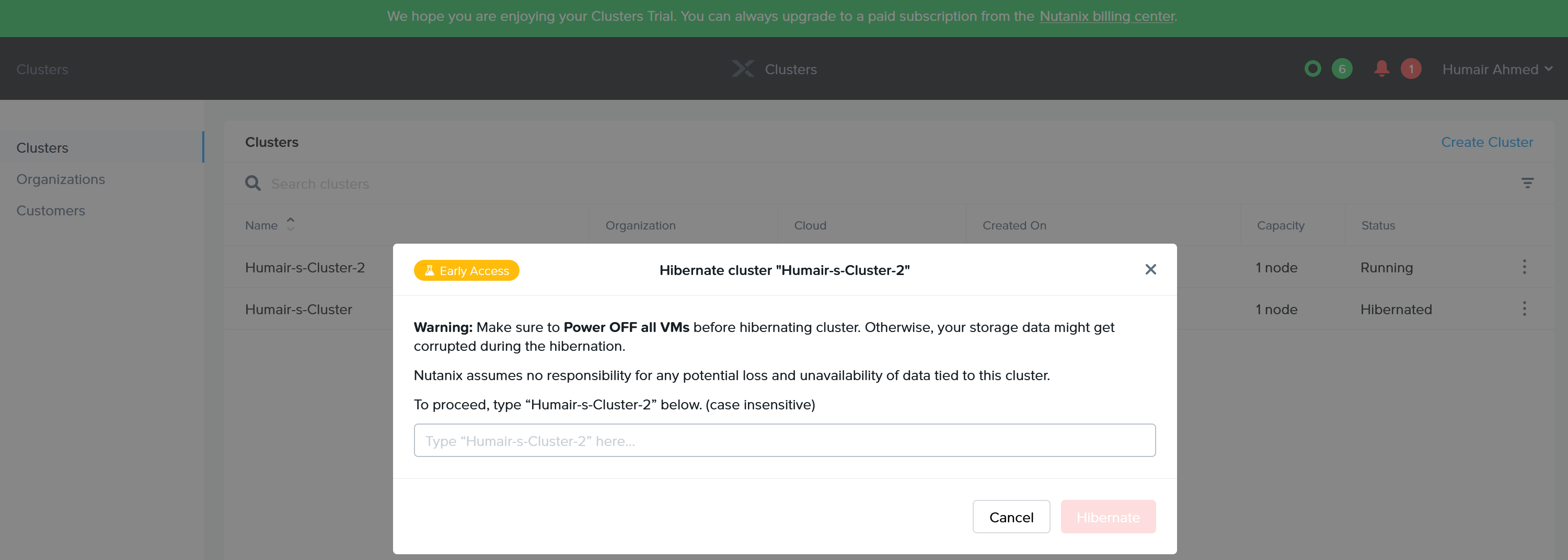



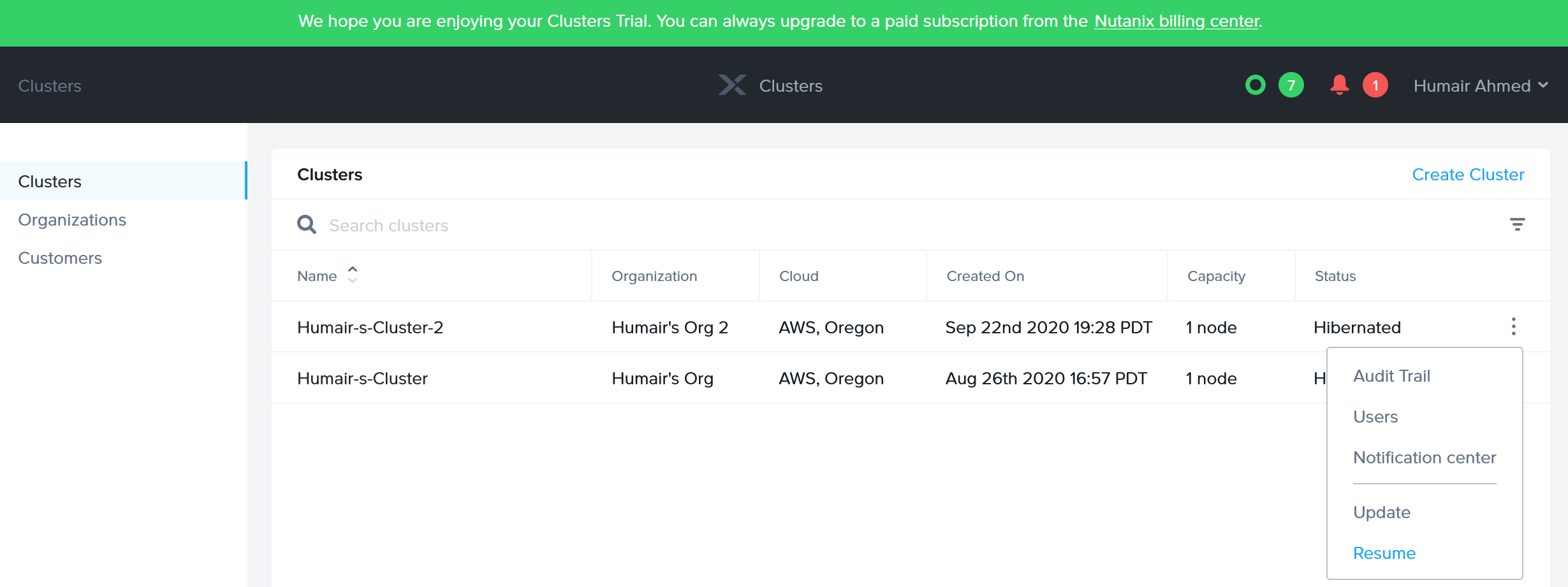
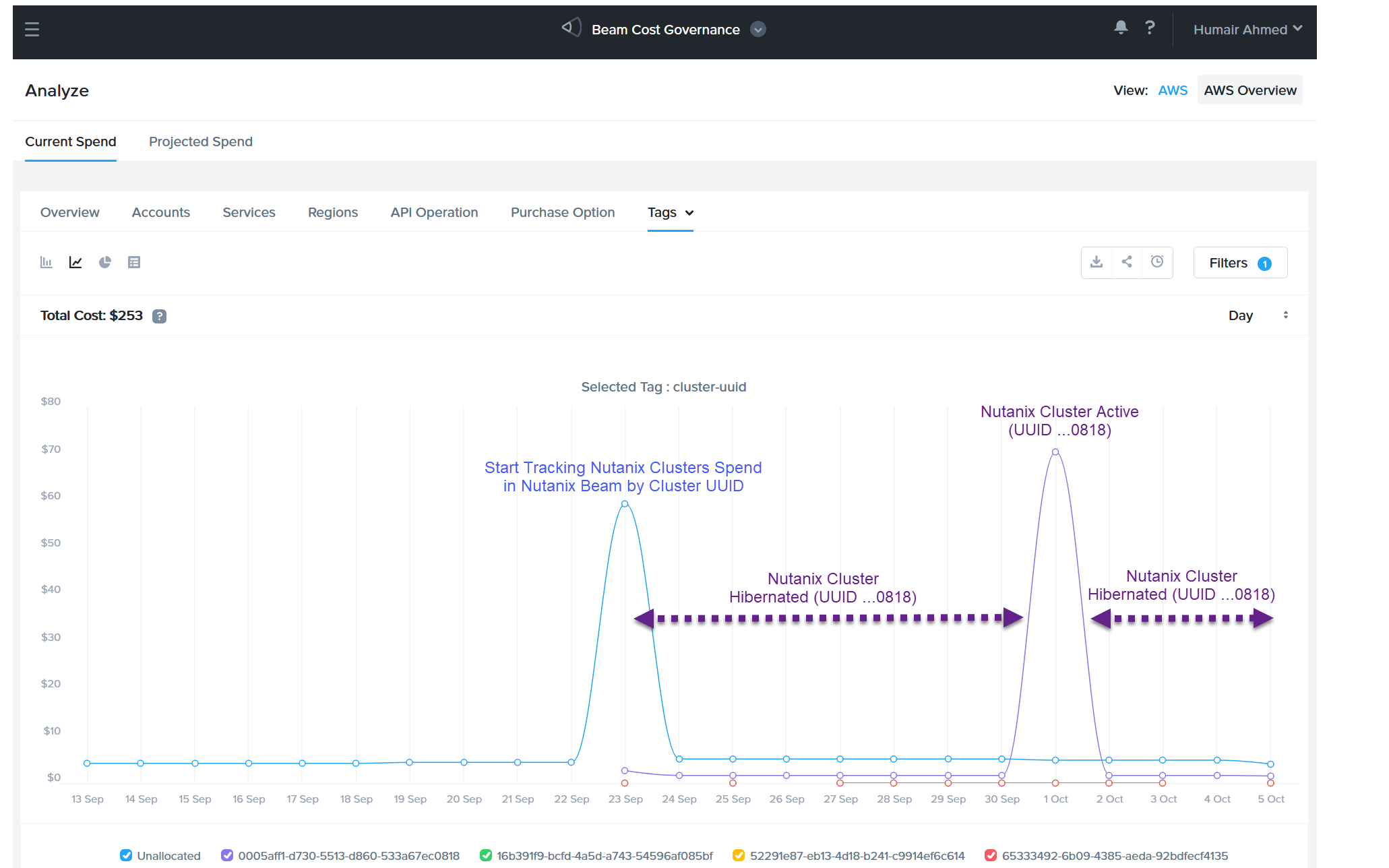
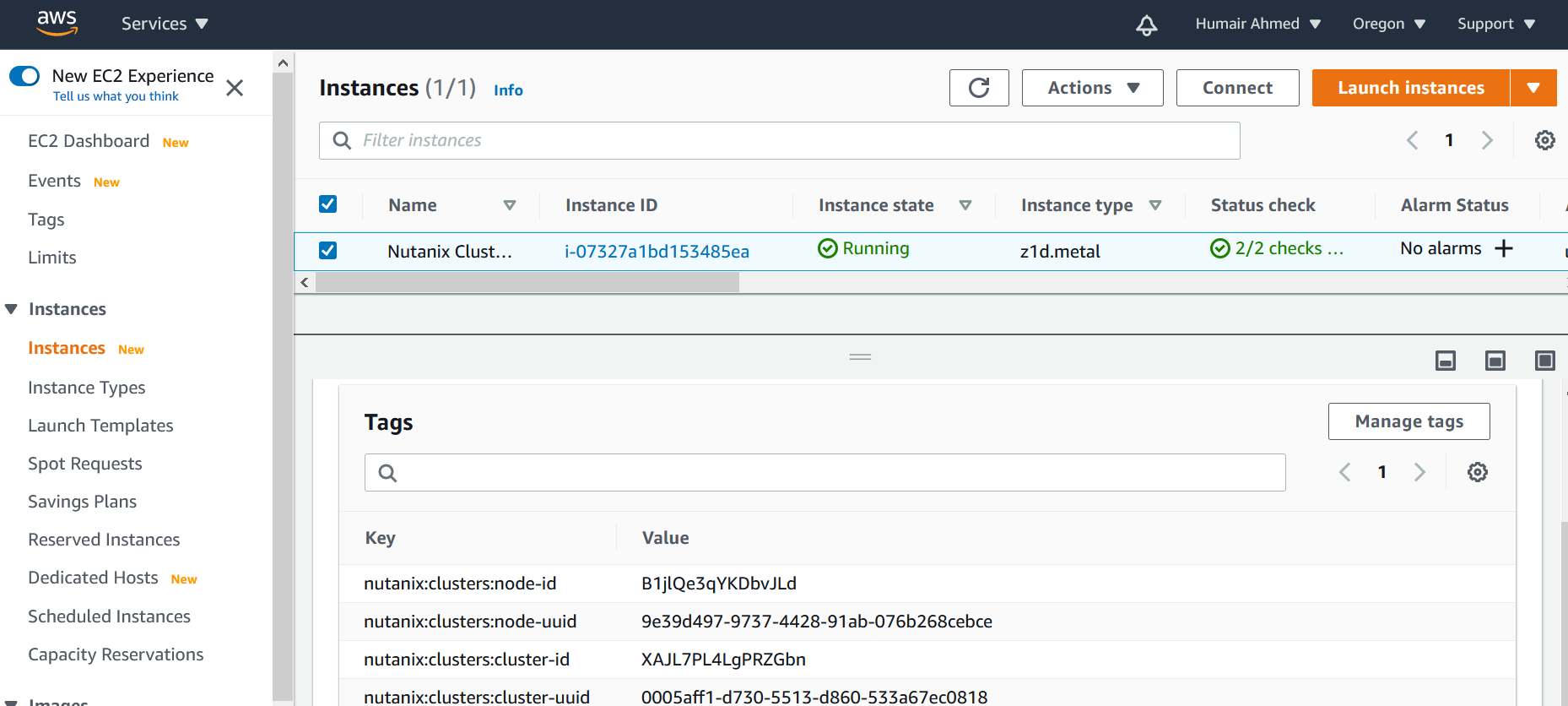




 Twitter
Twitter LinkedIn
LinkedIn Youtube
Youtube RSS
RSS